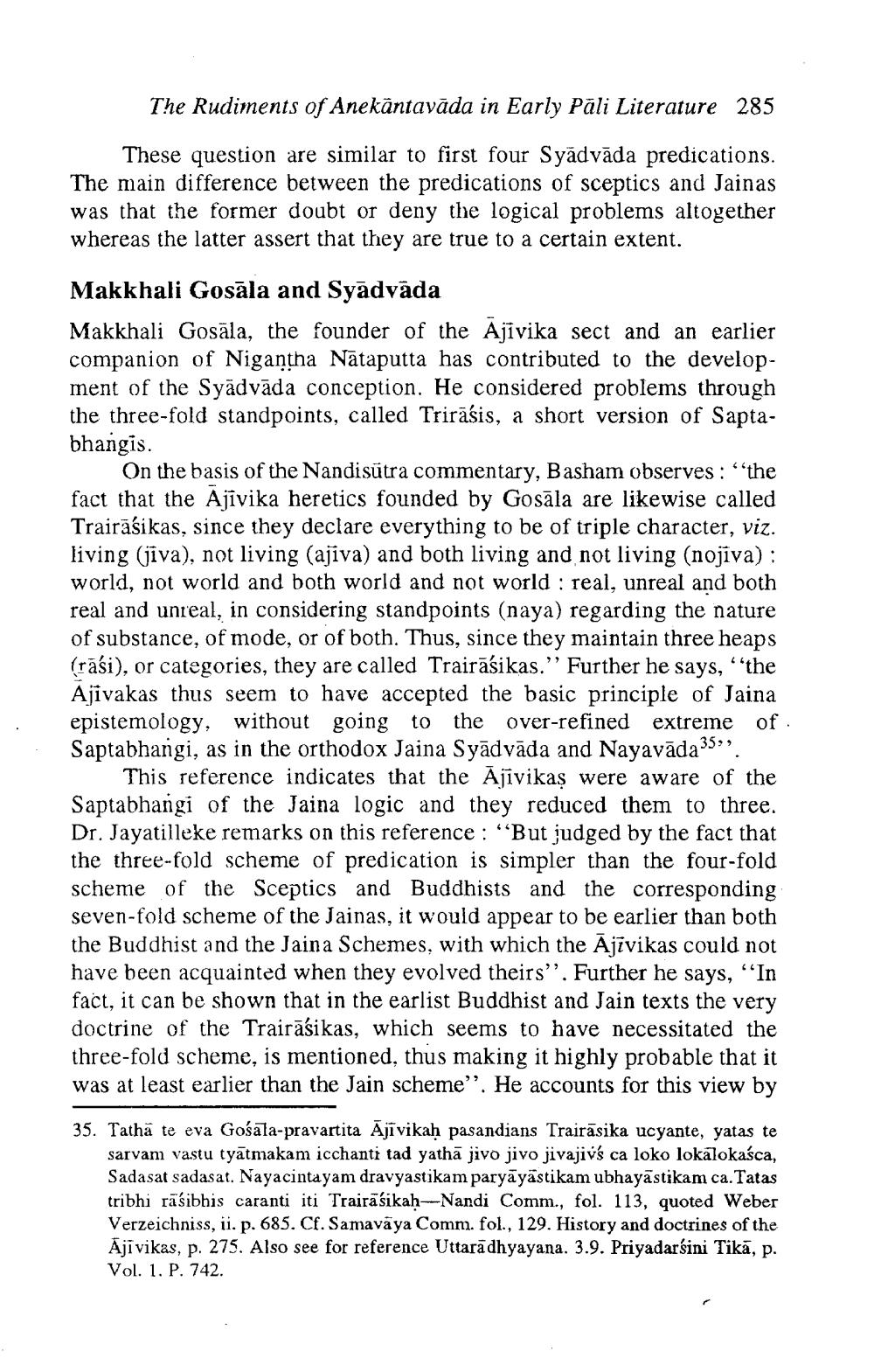________________
The Rudiments of Anekāntavāda in Early Pāli Literature 285
These question are similar to first four Syādvāda predications. The main difference between the predications of sceptics and Jainas was that the former doubt or deny the logical problems altogether whereas the latter assert that they are true to a certain extent.
Makkhali Gosāla and Syādväda Makkhali Gosāla, the founder of the Ajīvika sect and an earlier companion of Nigantha Nātaputta has contributed to the development of the Syādvāda conception. He considered problems through the three-fold standpoints, called Trirāśis, a short version of Saptabhangis.
On the basis of the Nandisūtra commentary, Basham observes : "the fact that the Ajīvika heretics founded by Gosāla are likewise called Trairāśikas, since they declare everything to be of triple character, viz. living (jiva), not living (ajiva) and both living and not living (nojiva): world, not world and both world and not world : real, unreal and both real and unreal, in considering standpoints (naya) regarding the nature of substance, of mode, or of both. Thus, since they maintain three heaps (rāśi), or categories, they are called Trairāśikas.'' Further he says, ''the Ajivakas thus seem to have accepted the basic principle of Jaina epistemology, without going to the over-refined extreme of Saptabhangi, as in the orthodox Jaina Syādvāda and Nayavāda353)
This reference indicates that the Ajīvikas were aware of the Saptabhangi of the Jaina logic and they reduced them to three. Dr. Jayatilleke remarks on this reference : “But judged by the fact that the three-fold scheme of predication is simpler than the four-fold scheme of the Sceptics and Buddhists and the corresponding seven-fold scheme of the Jainas, it would appear to be earlier than both the Buddhist and the Jaina Schemes, with which the Ajivikas could not have been acquainted when they evolved theirs''. Further he says, “In fact, it can be shown that in the earlist Buddhist and Jain texts the very doctrine of the Trairāśikas, which seems to have necessitated the three-fold scheme, is mentioned, thus making it highly probable that it was at least earlier than the Jain scheme''. He accounts for this view by
35. Tathā te eva Gośala-pravartita Ajīvikah pasandians Trairāsika ucyante, yatas te
sarvam vastu tyātmakam icchanti tad yathā jivo jivo jivajivś ca loko lokalokasca, Sadasat sadasat. Nayacintayam dravyastikam paryāyāstikam ubhayāstikam ca.Tatas tribhi rāśibhis caranti iti Trairāśikah--Nandi Comm., fol. 113, quoted Weber Verzeichniss, ii. p. 685. Cf. Samavaya Comm. fol., 129. History and doctrines of the Aji vikas, p. 275. Also see for reference Uttarādhyayana. 3.9. Priyadarsini Tikā, p. Vol. 1. P. 742.




